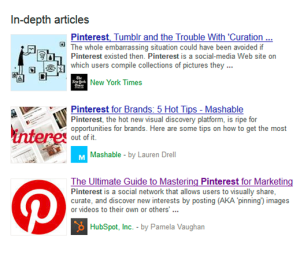 Tom Clancy died last month ,and like any other fan of techno political military thriller novels I was heartbroken.
Tom Clancy died last month ,and like any other fan of techno political military thriller novels I was heartbroken.
The man practically invented the sub-genre.
But that’s not why I am invoking Clancy.
My reasons are a little less literary.
Clancy: the consummate connector of dots
Anyone who has read Clancy will be struck by how detailed his descriptions were especially when it came to weapon systems.
When the “The Hunt for Red October” was published in 1984 authorities were spooked when they found out that Clancy was bang on when he wrote that Soviet submarines spent only 15 percent of their time out at sea. Other classified information that was scarily accurate included the number of SS-N-20 Seahawk missiles a Soviet sub carried.
Clancy found out about this when the then Navy Secretary cornered him at a White House reception and demanded the name of the officer who cleared his access to that info. Clancy denied that he had an inside source and replied that everything in the book was based on publicly available journals and manuals intended for military officers and engineers.
All he did was read them extensively, connect the dots and write a novel could have gotten him arrested for leaking national secrets.
Google Hummingbird, (Not Provided) and content marketing
If Clancy had written a book on his research methodology digital marketers would be thumbing and flipping through it right about now.
On Sept 26, 2013 during an event to mark the company’s 15th birthday Google announced that it was running a new search algorithm in the background codenamed Hummingbird. There were some other major announcements too which will change the way SEO works.
In case you are still not clear on what Hummingbird is all about Danny Sullivan has written a comprehensive FAQ about it. Go read it, I will wait.
One of the major announcements is that Google will completely stop providing organic keyword data by the end of the year. Right now, according to (Not Provided) Count, 81% of keywords are hidden.

For digital marketers and search professionals long used to organic keywords as a jumping off point for site optimization this is like trying to land a crippled jet on the rain lashed deck of a heaving aircraft carrier.
Another change introduced in Hummingbird is that the algorithm pays more attention to the meaning of the page rather than the presence of specific words while determining the rank. This is driven by the rise of voice search like Siri and Google Now where queries are in the form of natural language.
So how should content marketers deal with these changes? Here are a few ideas
1. Use tools and good old fashioned detective work to get traffic intelligence
Even though Google has stopped passing referrer data to analytics tools you can still use tools like Google Webmaster Tools, internal search for your website, Google Adwords (in case you are running PPC campaigns), Keyword Planner and Ubersuggest for keyword discovery and keyword intelligence.
You can use the free Not Provided Toolkit for Google Analytics to see
- Current percentage of not provided traffic
- Breakdown of not provided traffic by browser, device etc. with shiny graphs and charts
- Landing page information for not provided traffic
- Any Google Analytics reports for only not provided traffic
- Any Google Analytics reports for only organic keyword traffic
- Organic search data from non Google search engines
Also, because branded search traffic is more valuable than people who land up on your site because of a random query here is a hack to track branded search traffic which is otherwise obfuscated by (not provided).
See what I meant about B2B marketers channeling Clancy?
2. Create authoritative content, aka “In-depth articles”
I know, I know, authoritative content is starting to sound like “synergy”, “innovation” or “thought leadership”. But I am not flinging buzzwords here.
According to Google 10% of people want detailed information about a topic when they key in a search term on a broad topic. This is why Google has now introduced a new section called In-depth articles on some search terms. In the SERPs it looks like this
Because this feature is in the early days it’s not available across all locations even for the same keyword. But even then, creating cornerstone content is always a winning strategy.
Check out these guidelines from Google on how to best rank for this genre of content.
3. Focus on answering questions
Good content marketing has always been about providing information and insights that can help your prospects. With Hummingbird you don’t have an option anymore.
If you have already not done get busy finding out what questions your prospects and customers are asking about your solutions. Pull in data from sources like support tickets, customer surveys, sales queries, LinkedIn, Twitter, blog comments, mails, telephone queries and customer complaints.
Reorganize them, create FAQs, write blog posts, put up demo videos, compile these questions into buying guides and reuse that content in various formats like case studies or whitepapers to give yourself maximum online exposure.
4. Cozy up with Google Knowledge Graph
Google Knowledge Graph lies at the heart of Google providing a more relevant and complete answer to what you are looking. This video explains what it’s all about.
The updated Google Knowledge Graph
Here is one aspect of the Google Knowledge Graph in action. This feature is called Rich Snippets

So how can B2B content marketers play nice with Google Knowledge Graph to get more visibility in searches?
Have a blog with high quality content, for one. As this screen grab show, blog posts are highlighted disproportionately over other pages in search results. A visitor’s entry page might be your latest post so for the love of baby Jesus don’t phone your posts in.
You should also have a Google+ page for your brand and implement both rel=”author” and rel=”publisher” to connect websites and content creators with the respective Google+ pages and profiles.
5. Think conversions, not rankings
For a long time ranking has been one of the biggest badges of honor in digital marketing. You had keywords and your job was to rank for the first page of Google search, if not for position #1 or #2.
That has to change now. Ranking will still be a metric but the focus will have to move to getting high quality traffic to specific pages in the short term and performance based metrics like leads and sales in the long term .
Optimize your website and landing pages, keep your buyer personas updated, plug leakages in your sales funnel and audit and map your content to different stages in the buying process.
All this should actually make your job as a content marketer simpler. You won’t have to obsess and track daily or weekly movements of your keywords. You won’t have to look over your shoulder constantly and wonder what esoteric SEO plays your competition is up to. You won’t have to pull off shady shenanigans that could get your site banned from search results.
Best of all, the impact of your work will be reflected beyond the obvious like improvements in website user experience or email click through rates into business oriented metrics like sales and profits.
6. Implement semantic markup
Hummingbird has not changed the fundamentals of SEO i.e., making it easier for people and for search engines to retrieve information from your site. It has merely placed more emphasis on new elements like schema.org’s article markup.
That link is highly technical but in layperson’s terms, article markup basically tells Google what a number, word or phrase means. It helps Google and other search engines pull out information about ratings, event dates, sports stats, testimonials, recipes, videos and content creators and display them in the SERPs itself. This is why search results on Google look like this





Search results with rich data like this will drive more click throughs than the plain vanilla search results. Check out this detailed resource from Google on how to create these rich snippets.
7. Focus on mobile
I don’t care what you are selling but if you don’t pay attention to mobile you have a snowball’s chance in hell of getting traffic from Google especially in highly competitive markets.
In fact, if I were playing a shrink looking for subconscious cues about Google’s love of mobile I would link you to the blog post announcing the changes in Google search: they used the mobile view to show how the new features like the Rich Snippets.
So make your website mobile friendly and customize your emails for mobile users .Develop a content strategy that works both for desktop and mobile.
Bringing it all together
This all seems to be overwhelming and a lot will change as Google keeps on adding new features and axing older ones. Without keywords your workflow will also change and some aspects of content creation and marketing will be more challenging.
But as I have mentioned earlier, the basics around B2B content marketing and SEO won’t change. People will always want to know how to do their job better and avoid obstacles and landmines at work.
If you are selling a solution that has been demonstrated to help your prospects and customers do either or both create non salesy content about it in a way that’s relevant to them.
And above all, don’t forget stories. Clancy became famous spinning believable yarns around submarines and sonars- there is no reason why you can’t tell tales about CRM, CAD or cranes.
Business Articles | Business 2 Community
(535)
Report Post





